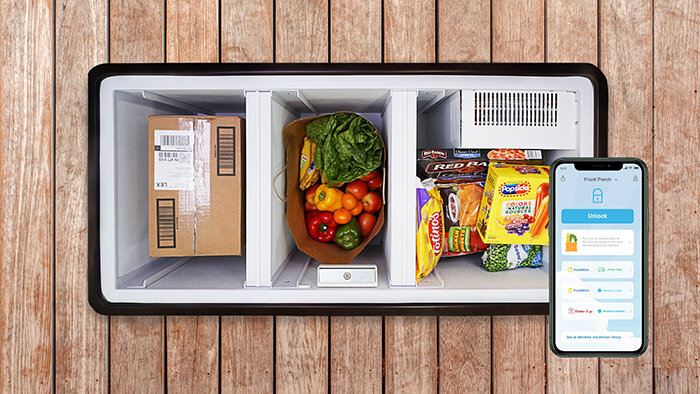The cost of home delivery is the big “elephant on the front porch” for grocers.
Online sale of groceries has doubled during the pandemic. That’s good for grocers, right? Actually, grocers lose money on every home delivery.
You may not realize it, but when you go to the grocery store, you are actually providing a lot of free labor to the process that gets groceries from the store shelf into your fridge. You drive to the store, walk the aisles picking items, put them in a cart, stand in line to check out, load the groceries into the car, drive home, and unload the groceries when you get home. This process is referred to as picking, packing and delivery (PPD). Shoppers unknowingly absorb this operational cost by shopping in-store.
Profit margins for in-store grocers are traditionally very tight – 2-4%. As you can imagine, when this PPD process cost is not absorbed by the consumer, as in online grocery delivery, profit can become loss very quickly. Nowadays, it is becoming the norm for shoppers to pick up their purchases curb-side, drive-thru, in-store (BOPIS meaning buy online and pickup in store), or have them delivered to their porch. When shoppers pick up at the store, the grocer absorbs the added costs of picking and packing which the shopper used to do by walking the aisles. The consumer still bears the expense of delivery measured in time, fuel, vehicle, and the inconvenience of driving to and from the store. But still, grocers lose all or most of their profit margin.
Home delivery of groceries shifts all of these costs, including delivery, to the grocer.
The cost of home delivery is the big “elephant on the front porch” for grocers. Unlike the delivery of durable goods (by UPS or FedEx, for example) which can be efficiently routed for delivery to multiple homes at any time throughout the day, perishable groceries are primarily delivered “point-to-point”, typically scheduled for delivery from store to home in a 1-2 hour window.
However, point-to-point delivery is very inefficient. During the pandemic, scheduling is less a problem since so many people are working from home. But that was not the case before the pandemic, and it will not be when we are able to go back to the office. Paying a delivery fee of at least $7-$10 may even be acceptable to many consumers, but it is not a solution because it doesn’t come close to covering the combined cost of picking, packing AND delivery.
So, why don’t grocers just charge online shoppers the full cost of labor for the convenience having the store pick, pack and deliver? The answer may not be that surprising. Consumers are used to low prices that this in-store shopping dynamic has afforded them and now, due to Amazon Prime and other delivery services, they have become accustomed to free delivery. They are particularly resistant to absorbing those costs when the labor cost is as obvious as a fee.
Grocery brands have a few options when trying to combat these new costs.
-
Robotic Automation. Brands can offset some of the picking and packing costs by installing sophisticated and expensive warehouse automation equipment, however this is best for big chains who can afford the large upfront investment. Even still, profit margins are only protected when an appropriate fee is added to cover some or all automated picking and packing cost for curbside, drive-thru, and BOPIS.
-
Partner with a Gig Service. Instacart, DoorDash, and others have built multi-billion-dollar businesses by disguising (hiding) the PPD cost by marking up the price of individual grocery items purchased from brick-and-mortar grocery stores and “re-selling” them on their website. Consumers can’t easily compare the store price with the resold item price, so they “rationalize” the price paid for convenience without knowing the actual cost. This is a perfect example of the axiom “Ignorance is bliss”, and “It’s good work if you can get it.” It is, and they do.
-
24/7 delivery + The Missing Piece. The “elephant” on the porch can be addressed. Homes need to be equipped with a secure, climate-controlled delivery appliance capable of receiving deliveries at any time day or night without requiring anyone to answer the door. Then couriers could intelligently route deliveries to many homes in a neighborhood or community at dramatic cost saving to grocers and other retailers.




